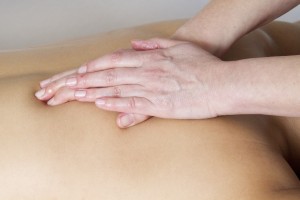Oooh I ache. I need a massage.

Magic hands!
Yes, massage and the myth of magic hands goes a long way. Sore muscles seem to know that the touch of a skilled therapist will help wipe away the fatigue and pain of long, hard sessions of training. Maybe even to the point of healing injuries and enabling the person to make a miraculous recovery, rising Lazarus like from the depths of injury to race-winning health within an hour.
This, I regret to inform you, does not happen in the real world.
No matter how magic you might think a person’s hands are, how miraculous the apparent recovery, it is not tissues that are being healed by the soothing touch. As I have touched on in earlier blogs, muscles, tendons, bones, ligaments etc all take a certain amount of time to heal. Healing times are not hurried along by prodding them.
So… What does massage actually do then?
The old story ‘everybody knows’ is that you find something that hurts/is lumpy and you rub it until it gets better/the lumpy bit goes away. Everything we seem to know about massage is that the muscle and fascia are the tissues that are affected. Rub the muscle/fascia in a certain way and hey presto – the person with magic hands has cured you.
As you can imagine things are a little more complex than that and no matter what I say, there is bound to be someone that contradicts me and tells me that I’m wrong. However – the thing that connects every muscle, every bit of fascia, tendon and bit of your body is your brain. You cannot relax without your brain telling you to do so, you cannot create tension without your brain telling you to do so. In reality, what the massage therapist is doing is not necessarily “talking” to and interacting with your muscles – but rather – with your brain- through the muscles.
Now, I know this all sounds a bit weird, but bear with me. Muscles and tendons have cells that monitor length and tension at all times, muscle spindles and golgi tendon organs. (no- I’m not making those names up). They monitor and control, yes, but they are under the overarching supervision of the brain. If someone massages some tissue, it is the brain that is monitoring the system and decides whether or not the muscles relax. This brings in a whole load of other things including psychological well-being, emotional state, location, surroundings and also the therapist.
Just having someone hammer your muscles into submission by putting as much pressure on as they can and sneering at you if you ask for a bit less pressure (although it seems to be what some associate with sports massage) is not really quite what we’re looking for. It might feel good afterwards – but only in the “thank god that isn’t happening any more” kind of way.
 No – we’re looking for an experience where the therapist understands not only what is going on mechanically, but is also sympathetic to what is occurring at higher brain centres – which are also going to affect how you feel. Yes, at the end of the day, it is finding a tender spot in a muscle and then working out why it might be sore, has it been overworked? If so, why? Are there other muscles that aren’t doing what they need to be doing? Does strength need to be added elsewhere to reduce tone in the tired muscle? Are you so sympathetically aroused that everything is as tense as a bowstring and you simply need a bit of calm?
No – we’re looking for an experience where the therapist understands not only what is going on mechanically, but is also sympathetic to what is occurring at higher brain centres – which are also going to affect how you feel. Yes, at the end of the day, it is finding a tender spot in a muscle and then working out why it might be sore, has it been overworked? If so, why? Are there other muscles that aren’t doing what they need to be doing? Does strength need to be added elsewhere to reduce tone in the tired muscle? Are you so sympathetically aroused that everything is as tense as a bowstring and you simply need a bit of calm?
Yes, massage can be complicated – but it can be simple. What isn’t clear is quite how it works. Sometimes, you just have to think: Does it make me feel better? Yes? Well, then, get on with it.
Another good blog on this subject which you might want to look out is here, with a part 2 here.




